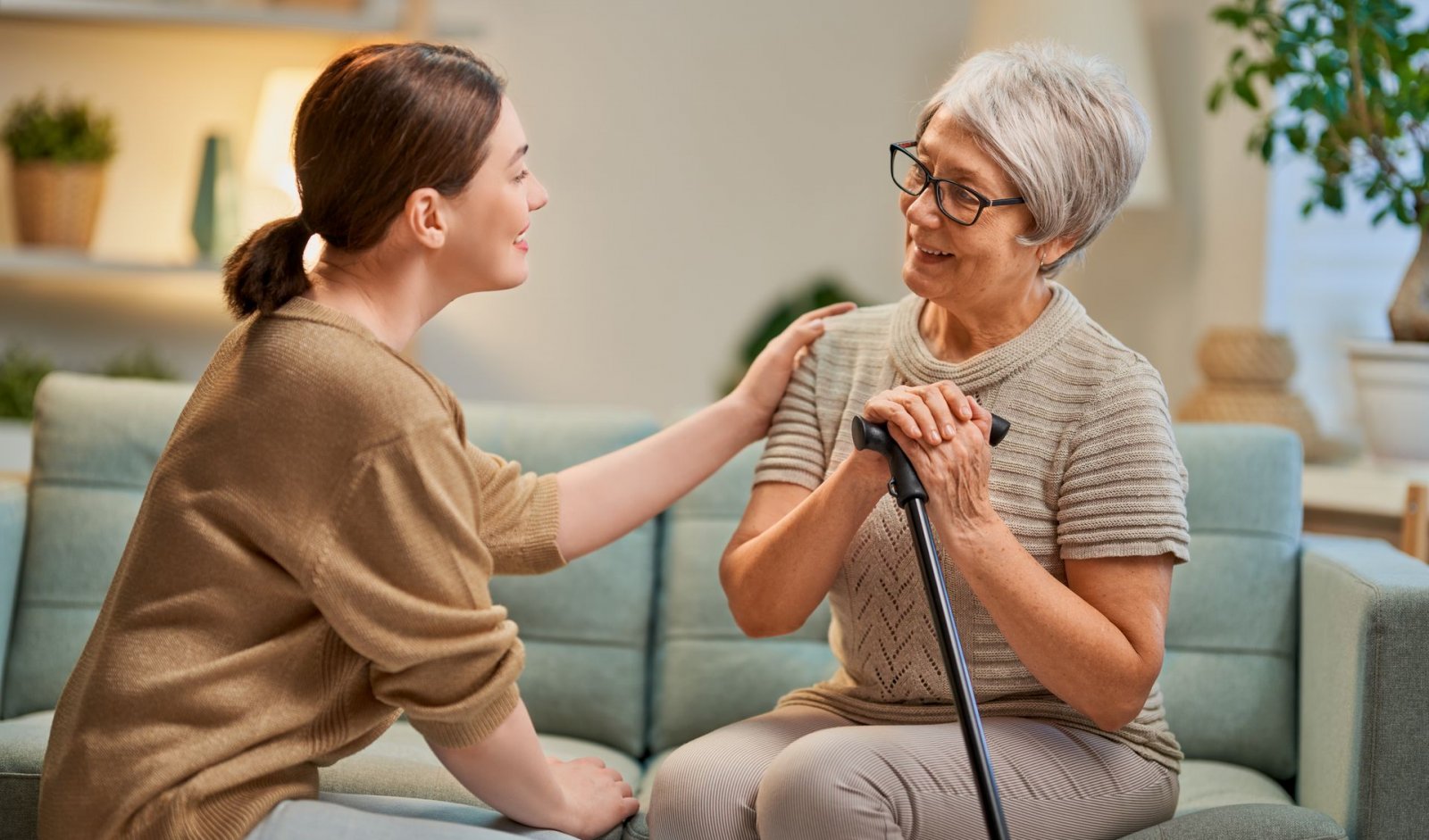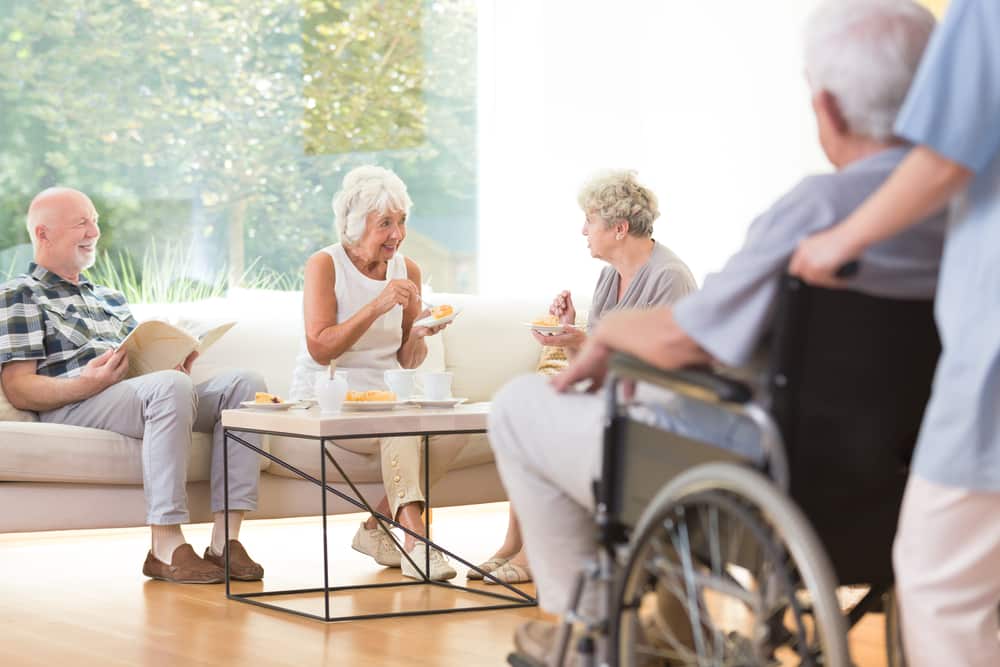Developing a Safe and Encouraging Atmosphere: In-Home Memory Care Fundamentals
Developing a nurturing and safe setting for individuals calling for at home memory treatment is vital to their wellness and top quality of life. From ensuring security within the living area to employing effective communication techniques and carrying out memory-friendly style components, there are essential elements that add to a holistic treatment strategy. By concentrating on creating a helpful ecological community that accommodates the unique demands of those with memory problems, caretakers can considerably enhance the daily experiences of their loved ones.

Safe Living Environment
Creating a protected and hazard-free living setting is vital when offering at home memory care for individuals with cognitive disabilities. Making certain the security of the private with memory loss is critical to avoid accidents and advertise a sense of wellness.
Furthermore, it is essential to mount safety and security attributes such as grab bars in shower rooms and hand rails along staircases to provide assistance and protect against mishaps. Furthermore, utilizing modern technology such as movement sensing units and alarms can alert caregivers if the individual wanders or remains in distress. Producing a safe living setting additionally entails applying approaches to stop roaming, such as utilizing door alarms or locks to restrict access to dangerous locations. By focusing on safety and security measures and getting rid of prospective dangers, caregivers can supply a safe and helpful environment for individuals with cognitive problems obtaining at home memory care.
Reliable Communication Methods
Executing tailored interaction methods is vital in promoting significant communications with individuals with cognitive disabilities in the context of at home memory treatment. Efficient communication plays a crucial role in developing a supportive atmosphere that boosts the health and high quality of life for individuals with memory concerns. When connecting with somebody experiencing cognitive decrease, it is necessary to use basic and clear language, keep a tranquility and favorable tone, and offer visual signs to aid understanding.
One trick approach is to exercise energetic listening, showing empathy, perseverance, and respect throughout conversations. Non-verbal hints such as faces and body language can also help communicate understanding and support. Additionally, using reminiscence therapy by discussing past experiences or making use of songs and art can use long-lasting memories, stimulating connections and boosting interaction.
Moreover, integrating normal routines and regular communication patterns can provide a sense of familiarity and safety and security for people with memory disabilities. By applying these interaction methods, caregivers can establish purposeful links and promote a feeling of convenience and count on the at home memory care setting.
Memory-Friendly Design
Offered the value of developing a supportive environment for people with memory problems with efficient communication methods, the unification of memory-friendly design components in the living area ends up being necessary in maximizing their day-to-day experiences and total health. Memory-friendly design focuses on improving security, comfort, and self-reliance for individuals with cognitive problems. Easy adjustments can make a considerable distinction, such as utilizing contrasting colors to boost presence and reduce complication, integrating clear signs to aid navigation, and lessening mess to stop sensory overload.
Integrating familiar components from the person's past, such as favored things or personal images, can stimulate positive memories and create a sense of familiarity. In addition, making certain ample lighting degrees, installing grab bars in restrooms, and carrying out non-slip flooring can aid avoid falls and injuries. Producing a calming and calming environment through the usage of acquainted scents, soft textures, and calm audios can also promote relaxation and minimize anxiety. By incorporating these memory-friendly style components, caregivers can give a risk-free and supportive home that makes it possible for people with memory issues to keep their independence and lifestyle.
Daily Routine Preparation
When creating a day-to-day regimen for people with memory problems, careful planning is vital to support their cognitive feature and general well-being. Establishing a structured routine can assist lower stress and anxiety, confusion, and disorientation frequently experienced by those with memory disabilities.
Adaptability is key, as some days may require changes based on the person's state of mind and energy degrees. Routinely evaluating and adjusting the daily routine will certainly aid guarantee its performance in advertising a favorable and reassuring atmosphere for individuals with memory obstacles.
Support Group Application
Developing a robust network of supportive individuals plays a critical function in enhancing my website the high quality of treatment and wellness for individuals requiring memory support. Member of the family, buddies, healthcare specialists, and area sources can all add to producing a strong support group. Interaction among these individuals is necessary to ensure that the demands of the private with memory challenges are fulfilled effectively.
Relative are often the key caregivers and create the backbone of the assistance system. They supply daily treatment, emotional assistance, and companionship. It is critical for family participants to seek help and break when required to stop exhaustion and ensure the most effective possible look after their liked one.
In enhancement to household assistance, involving health care specialists such as doctors, specialists, and nurses can supply specific treatment and assistance. These discover here professionals can use useful understandings, medical suggestions, and assistance in handling the person's problem.

Final Thought
Finally, producing a encouraging and safe setting for individuals with memory care needs is essential for their health. By developing a risk-free living setting, utilizing efficient interaction strategies, including memory-friendly layout aspects, planning daily regimens, and applying a strong assistance system, caretakers can aid boost the lifestyle for those with memory loss. These vital elements collaborate to produce a nurturing and encouraging environment that promotes self-reliance and enhances general lifestyle.
Developing a protected and hazard-free living setting is vital when supplying at home memory treatment for people with cognitive disabilities. By focusing on safety actions and removing prospective dangers, caretakers can give a safe and supportive environment for individuals with cognitive problems obtaining at home memory treatment.
Establishing a durable network of helpful individuals plays a pivotal duty in enhancing the quality of care and well-being for individuals requiring memory support - Charlotte Memory Care. Communication amongst these people is vital to guarantee that the demands of the individual with memory obstacles are met successfully
